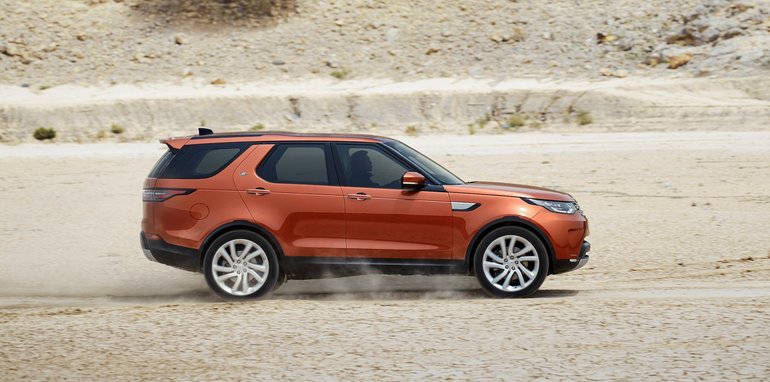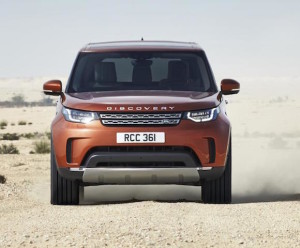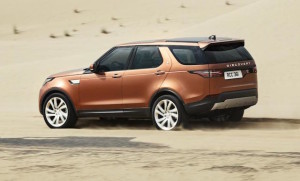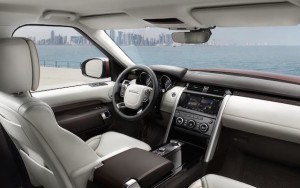
 The all-new Land Rover Discovery will go on sale in New Zealand around the middle of next year – but the distributors here are still undecided about engine options.
The all-new Land Rover Discovery will go on sale in New Zealand around the middle of next year – but the distributors here are still undecided about engine options.
What is clear is that the introductory model will come with a 3.0-litre turbo-diesel V6. What isn’t is whether the new line-up of 2.0-litre four-cylinder diesels will cut it with buyers here.
“We are a little unsure at the moment about the two-litre engines,” said Stephen Kenchington, the general manager of Jaguar Land Rover (JRL) agents Motorcorp Distributors Ltd.
“We need to assess them. I’ve seen the new model but I haven’t driven it. The two-litre capacity works for Volvo’s XC90 and other SUVs, but the Discovery buyer is a very different buyer.
 “We have to work through a combination of things yet. What models we can get; what engines; what equipment and specification; what the prices will be. In the end it will all come down to price.”
“We have to work through a combination of things yet. What models we can get; what engines; what equipment and specification; what the prices will be. In the end it will all come down to price.”
The four-wheel-drive, seven-seat Discovery gets four- and six-cylinder petrol and diesel engines, mated to eight-speed ZF automatic transmissions. The high-spec diesel New Zealand will get first is the 3.0-litre Td6 six-cylinder, good for 190kW/600Nm. The top petrol unit will be the supercharged Si6, 3.0-litre V6 delivering around 250kW/450Nm.
 The four-cylinder units that Motorcorp’s Kenchington needs to evaluate are JRL’s new-age 2.0-litre Ingenium turbo-diesels models. The base Td4 engine delivers 132kW/430Nm; the more powerful Sd4 twin-turbo variant generates 177kW/500Nm.
The four-cylinder units that Motorcorp’s Kenchington needs to evaluate are JRL’s new-age 2.0-litre Ingenium turbo-diesels models. The base Td4 engine delivers 132kW/430Nm; the more powerful Sd4 twin-turbo variant generates 177kW/500Nm.
Town-and-around fuel use from the 132kW base model four-pot diesel is 6.3 litres/100km. The 177kW engine uses 6.5 litres/100km. The 190kW six-cylinder swallows 7.2 litres/100km. The 2.0-litre units on paper therefore have a moderate advantage in fuel economy, but is it enough to lure buyers away from meatier six-cylinder capacity.
So what else is new in the fifth-generation Discovery?
- Ground clearance is 283mm, up 43mm. Wading depth jumps from 200mm to 900mm. When the driver parks and unclips the seatbelt, Disco’s standard air suspension lowers itself by 40mm or a maximum 60mm to aid loading. Off-road it can lift 75mm.
- Disco gets full-time all-wheel-drive with an optional two-speed transfer box. The standard set-up is a single-speed transfer box that splits front/rear torque 42:58. The two-speed splits it 50:50.
- The rotary-controlled Terrain Response 2 system allows different characteristics of engine, gearing and throttle response. The All-Terrain Progress Control system can choose different crawl speeds.
- Heating is available in all three rows of seats, but cooling is in the first two rows only. The back seats can be operated by the touchscreen media system or by smartphone app.
- Disco can tow up to 3500kg. Advanced Tow Assist allows the driver to avoid counter-steering when backing a trailer by using the rotary dial between the seats.
- A 10-inch touchscreen called InControl Touch Pro helps rid the cockpit of a third of its existing buttons. It gets Wi-Fi, Apple CarPlay and Android Auto connectivity, as well as sat-nav, Bluetooth and more. A screen with dual-view capability allows the front passenger to watch television.
- There are up to nine USB jacks available, along with six 12-volt outlets. The Jaguar Activity Key wristband, a remote controller of sorts, is available on Disco.
- The cockpit and cargo area have improved space and convenience, including a storage box behind the air-conditioning controls up front. There are 1231 litres of space in the boot behind the second-row seats, and 2500 litres with the second-row down. The space with all seven seats up is a claimed 256 litres.
- The current model’s split tailgate has been replaced by a single-piece tailgate complemented by a electronically folding floor section with a claimed load limit of 300kg. The three glass roof sections have gone, too, replaced by two larger ones.

